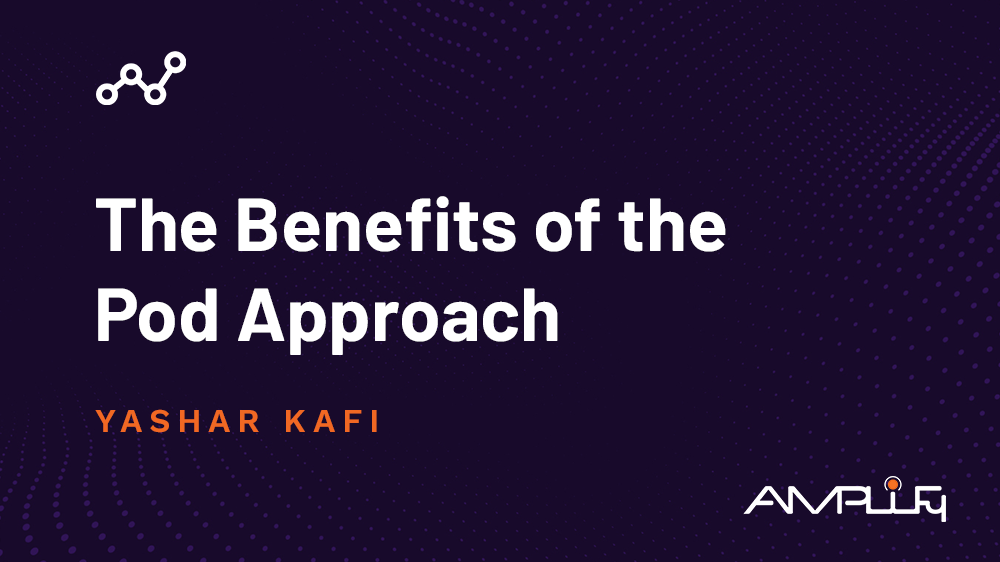The Benefits of the Pod Approach
Although every organization has a different approach to developing employee skills, one thing that is not in doubt is that employee development is a critical component of organizational growth. The talents of your individual employees are vital assets that must be nurtured and developed for the betterment of the whole. One question we often receive is how can organizations up-skill their employees when there are real consequences for failure? This is why Amplify advocates for The Pod approach.
What is the Pod?
The Pod consists of a small group of self-organizing professionals at different stages of their careers. Each of these members have different competencies, which allows them to work collaboratively and deliver projects across multiple iterations. Beyond the collaborative component,
The Pod focuses on learning and development to ensure each member understands how their skills complement their peers’ to successfully deliver projects.
The Pod meets weekly, bringing in specialists across industry to identify, as well as A/B test, concepts and processes from every conceivable angle. These approaches are facilitated through these varying perspectives. By creating a shared learning model, the pod is insulated from everyday business demands, which allows learning to be the focus as opposed to time-sensitive bottom lines.
However, these aren’t the only benefits from
The Pod. We’ve also seen numerous benefits for organizational development, along with employee up-skilling.
Key takeaways:
- The Pod leads to greater product focus but also better attention to detail. By allowing members to work in a controlled environment with a dedicated leader, learning goals remain the priority and the pod continuously adapts to new challenges.
- By working closely with others in The Pod, members study the intricacies of each role in the group and how these roles intersect one another. This allows them to better appreciate the mindsets and perspectives of their other team members.
- Because pods are constructed with diverse skillsets in mind, each member of the team accentuates the abilities of the other members. This foregrounds strengths as opposed to weaknesses and allows the pod to establish an efficient decision-making process.
- Accordingly, by fostering the capacities of everyone on the pod, the time to fulfill and deliver projects greatly diminishes. The Pod offers real-value deliverables in a fraction of the time as other teams.
- Through collaboration, each pod member develops a relationship with their peers and pod leader. In addition, the needs of clients, sponsors and stakeholders are taken into account, as The Pod works to complete necessary tasks.
- Whereas many consultants receive “trial-by-fire” training, The Pod provides a controlled environment wherein consultants are trained without the fear of failure. This empowers them to fail fast, experiment with new ideas and foster their development.
- Perhaps most importantly, once pod members have been trained within the pod model, they can be swiftly deployed onto new projects or seamlessly integrated into new teams. This allows these members to bring their skills and understanding of the pod process to a new environment.




